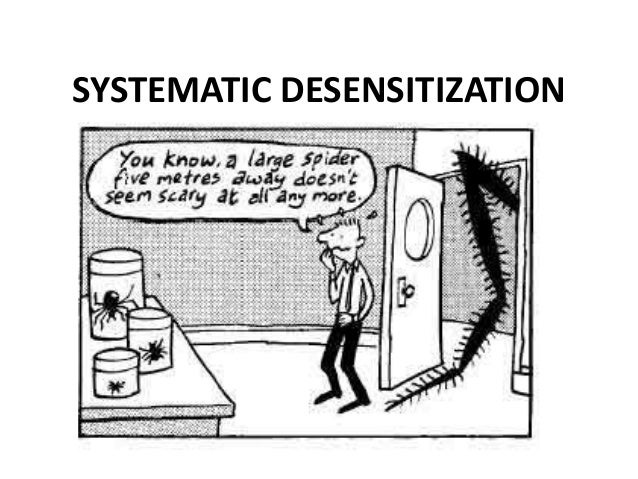Treating Phobias
Treating Phobias
Treating phobias is very difficult to accomplish. A phobia is a irrational fear or a strong dislike of something. Some examples of phobias are fears of spiders, heights, crowded spaces, flying, elevators, public transportation, and so on. There are ways to treat phobias such as systematic desensitization, and flooding. Systematic desensitization is a way to treat a phobia by paring relaxation and a succession of stimuli which stops the fear. Wolpe founded this treatment and it consists of three steps. The first step is training in relaxation which is a deep muscle relaxation. The second step consists of showing the person with the fear several picture staring with a picture that causes the least amount of anxiety up to the most. The final step includes pairing each picture with relaxation. The process starts with the least fearful picture while including relaxation, then continues all the way to the most fearful to eliminate the anxiety all together.
Another way to treat a phobia is by a treatment called flooding. Flooding is a long exposure to the feared stimulus by the client so the fear will decrease quickly. The client in treatment will first visualize their fear and practice visualizing it at home. An example of this would be if a person is afraid of balloons, they would have to think of a balloon in the room. The next step would include the person with the fear actually encountering the situation. An example is the person with the balloon fear having to go into a room with balloons and pop them. This is a quicker treatment of extinguishing a phobia and it might not work for everyone. These are some ways to treat several phobias.

Youtube video of systematic desensitization:
https://www.youtube.com/watch?v=n4m2NJlJVuc
Youtube video of flooding:
https://www.youtube.com/watchv=wo_h3eRHqWQ
References: Powell, R. A., Symbaluk, D. G., & Honey, L. P. (2002). Introduction to Learning and Behavior (Fourth Edition ed.). Belmont: Wadsworth/ Thompson Learning.
In my education class we were talking about phobias and a lot of people chose systematic desensitization when we had to explain how to get rid of a phobia. I didn't really learn about flooding until reading the chapter. I also feel that when using flooding the person has to be all in or else it wont work. For instance, since you have to visualize what is scaring you some people have a hard time doing that or won't take it seriously. I like how you explained each treatment technique and also gave videos to explain it even more.
ReplyDeleteAfter being educated on how systemic desensitization and flooding work, I always ponder which I would like to do if I had an irrational phobia. My best friend is deathly afraid of spiders, I am not sure which she would prefer. Systemic desensitization is a slower process while flooding happens all at once. I believe that flooding may just scare her even more if exposed too soon. Melissa's youtube video mentions that is also an opposing factor to flooding. That would be the total opposite effect of what we would want!
ReplyDeleteI agree with what Jaclyn said about being unable to choose between systematic desensitization or flooding as a technique to extinguish a phobia in myself. Though systematic desensitization seems like it would be less invasive, I think that flooding would be more effective because of the constant presentation of the feared stimulus. I feel that systematic desensitization would take longer to eradicate a phobia because it requires so much focus to relax that it is more tasking on a person.
ReplyDeleteI agree flooding can sound intense to a person that has a phobia. The cartoon caption was amusing :) I know a person that is deathly afraid of heights and I wonder which would be a more effective technique for extinguishing his fears. I can see pros and cons to both.
ReplyDelete